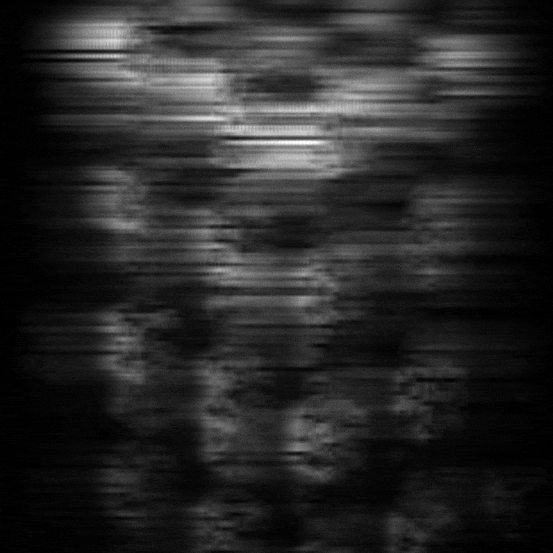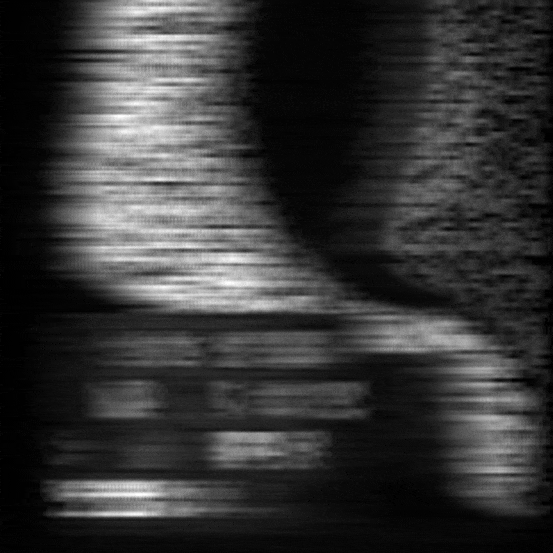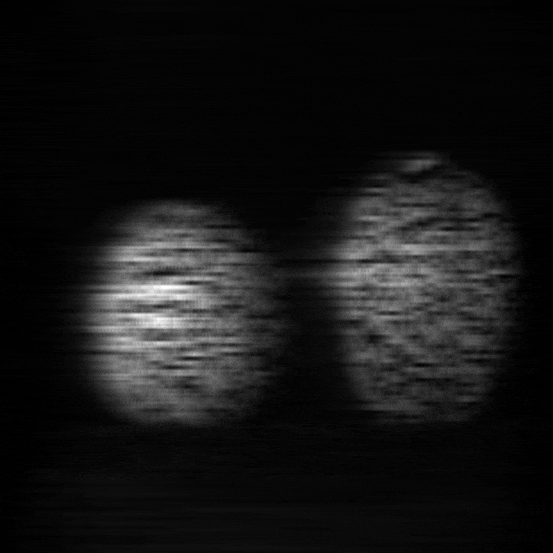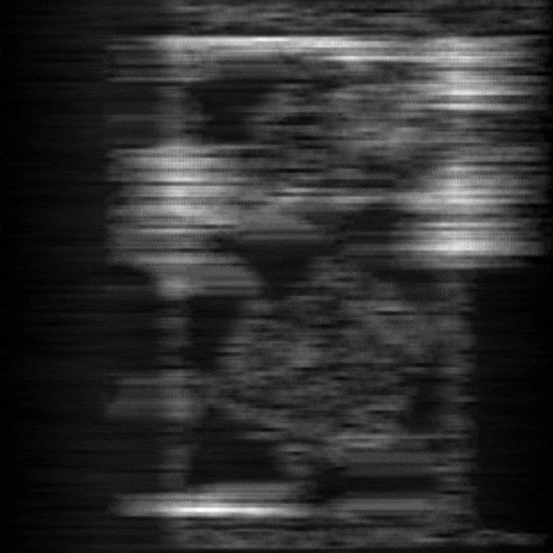Yuanhao Cai, Jing Lin, Xiaowan Hu, Haoqian Wang, Xin Yuan, Yulun Zhang, Radu Timofte, and Luc Van Gool
The first two authors contribute equally to this work
- 2022.07.04 : Our paper CST has been accepted by ECCV 2022, code and models are coming soon. 🚀
- 2022.06.14 : Code and models of MST and MST++ have been released. This repo supports 11 learning-based methods to serve as toolbox for Spectral Compressive Imaging. The model zoo will be enlarged. 🔥
- 2022.05.20 : Our work DAUHST is on arxiv. 💫
- 2022.04.02 : Further work MST++ has won the NTIRE 2022 Spectral Reconstruction Challenge. 🏆
- 2022.03.09 : Our work CST is on arxiv. 💫
- 2022.03.02 : Our paper MST has been accepted by CVPR 2022, code and models are coming soon. 🚀
| Scene 2 | Scene 3 | Scene 4 | Scene 7 |
|---|---|---|---|
 |
 |
 |
 |
Abstract: Hyperspectral image (HSI) reconstruction aims to recover the 3D spatial-spectral signal from a 2D measurement in the coded aperture snapshot spectral imaging (CASSI) system. The HSI representations are highly similar and correlated across the spectral dimension. Modeling the inter-spectra interactions is beneficial for HSI reconstruction. However, existing CNN-based methods show limitations in capturing spectral-wise similarity and long-range dependencies. Besides, the HSI information is modulated by a coded aperture (physical mask) in CASSI. Nonetheless, current algorithms have not fully explored the guidance effect of the mask for HSI restoration. In this paper, we propose a novel framework, Mask-guided Spectral-wise Transformer (MST), for HSI reconstruction. Specifically, we present a Spectral-wise Multi-head Self-Attention (S-MSA) that treats each spectral feature as a token and calculates self-attention along the spectral dimension. In addition, we customize a Mask-guided Mechanism (MM) that directs S-MSA to pay attention to spatial regions with high-fidelity spectral representations. Extensive experiments show that our MST significantly outperforms state-of-the-art (SOTA) methods on simulation and real HSI datasets while requiring dramatically cheaper computational and memory costs.
This repo is a baseline and toolbox containing 11 learning-based algorithms for spectral compressive imaging.
We are going to enlarge our model zoo in the future.
Supported algorithms:
The performance are reported on 10 scenes of the KAIST dataset. The test size of FLOPS is 256 x 256.
Note: access code for Baidu Disk is mst1
pip install -r requirements.txtDownload cave_1024_28 (One Drive), CAVE_512_28 (Baidu Disk, code: ixoe | One Drive), KAIST_CVPR2021 (Baidu Disk, code: 5mmn | One Drive), TSA_simu_data (One Drive), TSA_real_data (One Drive), and then put them into the corresponding folders of datasets/ and recollect them as the following form:
|--MST
|--real
|-- test_code
|-- train_code
|--simulation
|-- test_code
|-- train_code
|--visualization
|--datasets
|--cave_1024_28
|--scene1.mat
|--scene2.mat
:
|--scene205.mat
|--CAVE_512_28
|--scene1.mat
|--scene2.mat
:
|--scene30.mat
|--KAIST_CVPR2021
|--1.mat
|--2.mat
:
|--30.mat
|--TSA_simu_data
|--mask.mat
|--Truth
|--scene01.mat
|--scene02.mat
:
|--scene10.mat
|--TSA_real_data
|--mask.mat
|--Measurements
|--scene1.mat
|--scene2.mat
:
|--scene5.matFollowing TSA-Net and DGSMP, we use the CAVE dataset (cave_1024_28) as the simulation training set. Both the CAVE (CAVE_512_28) and KAIST (KAIST_CVPR2021) datasets are used as the real training set.
(1) Training:
cd MST/simulation/train_code/
# MST_S
python train.py --template mst_s --outf ./exp/mst_s/ --method mst_s
# MST_M
python train.py --template mst_m --outf ./exp/mst_m/ --method mst_m
# MST_L
python train.py --template mst_l --outf ./exp/mst_l/ --method mst_l
# GAP-Net
python train.py --template gap_net --outf ./exp/gap_net/ --method gap_net
# ADMM-Net
python train.py --template admm_net --outf ./exp/admm_net/ --method admm_net
# TSA-Net
python train.py --template tsa_net --outf ./exp/tsa_net/ --method tsa_net
# HDNet
python train.py --template hdnet --outf ./exp/hdnet/ --method hdnet
# DGSMP
python train.py --template dgsmp --outf ./exp/dgsmp/ --method dgsmp
# BIRNAT
python train.py --template birnat --outf ./exp/birnat/ --method birnat
# MST_Plus_Plus
python train.py --template mst_plus_plus --outf ./exp/mst_plus_plus/ --method mst_plus_plus
# λ-Net
python train.py --template lambda_net --outf ./exp/lambda_net/ --method lambda_netThe training log, trained model, and reconstrcuted HSI will be available in MST/simulation/train_code/exp/ .
(2) Testing :
Download the pretrained model zoo from (Google Drive / Baidu Disk, code: mst1) and place them to MST/simulation/test_code/model_zoo/
Run the following command to test the model on the simulation dataset.
cd MST/simulation/test_code/
# MST_S
python test.py --template mst_s --outf ./exp/mst_s/ --method mst_s --pretrained_model_path ./model_zoo/mst/mst_s.pth
# MST_M
python test.py --template mst_m --outf ./exp/mst_m/ --method mst_m --pretrained_model_path ./model_zoo/mst/mst_m.pth
# MST_L
python test.py --template mst_l --outf ./exp/mst_l/ --method mst_l --pretrained_model_path ./model_zoo/mst/mst_l.pth
# GAP_Net
python test.py --template gap_net --outf ./exp/gap_net/ --method gap_net --pretrained_model_path ./model_zoo/gap_net/gap_net.pth
# ADMM_Net
python test.py --template admm_net --outf ./exp/admm_net/ --method admm_net --pretrained_model_path ./model_zoo/admm_net/admm_net.pth
# TSA_Net
python test.py --template tsa_net --outf ./exp/tsa_net/ --method tsa_net --pretrained_model_path ./model_zoo/tsa_net/tsa_net.pth
# HDNet
python test.py --template hdnet --outf ./exp/hdnet/ --method hdnet --pretrained_model_path ./model_zoo/hdnet/hdnet.pth
# DGSMP
python test.py --template dgsmp --outf ./exp/dgsmp/ --method dgsmp --pretrained_model_path ./model_zoo/dgsmp/dgsmp.pth
# BIRNAT
python test.py --template birnat --outf ./exp/birnat/ --method birnat --pretrained_model_path ./model_zoo/birnat/birnat.pth
# MST_Plus_Plus
python test.py --template mst_plus_plus --outf ./exp/mst_plus_plus/ --method mst_plus_plus --pretrained_model_path ./model_zoo/mst_plus_plus/mst_plus_plus.pth
# λ-Net
python test.py --template lambda_net --outf ./exp/lambda_net/ --method lambda_net --pretrained_model_path ./model_zoo/lambda_net/lambda_net.pth-
The reconstrcuted HSIs will be output into
MST/simulation/test_code/exp/ -
Place the reconstructed results into
MST/simulation/test_code/Quality_Metrics/resultsand
Run cal_quality_assessment.mto calculate the PSNR and SSIM of the reconstructed HSIs.
(3) Visualization :
-
Put the reconstruted HSI in
MST/visualization/simulation_results/resultsand rename it as method.mat, e.g., mst_s.mat. -
Generate the RGB images of the reconstructed HSIs
cd MST/visualization/
Run show_simulation.m - Draw the spetral density lines
cd MST/visualization/
Run show_line.m(1) Training:
cd MST/real/train_code/
# MST_S
python train.py --template mst_s --outf ./exp/mst_s/ --method mst_s
# MST_M
python train.py --template mst_m --outf ./exp/mst_m/ --method mst_m
# MST_L
python train.py --template mst_l --outf ./exp/mst_l/ --method mst_l
# GAP-Net
python train.py --template gap_net --outf ./exp/gap_net/ --method gap_net
# ADMM-Net
python train.py --template admm_net --outf ./exp/admm_net/ --method admm_net
# TSA-Net
python train.py --template tsa_net --outf ./exp/tsa_net/ --method tsa_net
# HDNet
python train.py --template hdnet --outf ./exp/hdnet/ --method hdnet
# DGSMP
python train.py --template dgsmp --outf ./exp/dgsmp/ --method dgsmp
# BIRNAT
python train.py --template birnat --outf ./exp/birnat/ --method birnat
# MST_Plus_Plus
python train.py --template mst_plus_plus --outf ./exp/mst_plus_plus/ --method mst_plus_plus
# λ-Net
python train.py --template lambda_net --outf ./exp/lambda_net/ --method lambda_netThe training log, trained model, and reconstrcuted HSI will be available in MST/real/train_code/exp/ .
(2) Testing :
cd MST/real/test_code/
# MST_S
python test.py --template mst_s --outf ./exp/mst_s/ --method mst_s --pretrained_model_path ./model_zoo/mst/mst_s.pth
# MST_M
python test.py --template mst_m --outf ./exp/mst_m/ --method mst_m --pretrained_model_path ./model_zoo/mst/mst_m.pth
# MST_L
python test.py --template mst_l --outf ./exp/mst_l/ --method mst_l --pretrained_model_path ./model_zoo/mst/mst_l.pth
# GAP_Net
python test.py --template gap_net --outf ./exp/gap_net/ --method gap_net --pretrained_model_path ./model_zoo/gap_net/gap_net.pth
# ADMM_Net
python test.py --template admm_net --outf ./exp/admm_net/ --method admm_net --pretrained_model_path ./model_zoo/admm_net/admm_net.pth
# TSA_Net
python test.py --template tsa_net --outf ./exp/tsa_net/ --method tsa_net --pretrained_model_path ./model_zoo/tsa_net/tsa_net.pth
# HDNet
python test.py --template hdnet --outf ./exp/hdnet/ --method hdnet --pretrained_model_path ./model_zoo/hdnet/hdnet.pth
# DGSMP
python test.py --template dgsmp --outf ./exp/dgsmp/ --method dgsmp --pretrained_model_path ./model_zoo/dgsmp/dgsmp.pth
# BIRNAT
python test.py --template birnat --outf ./exp/birnat/ --method birnat --pretrained_model_path ./model_zoo/birnat/birnat.pth
# MST_Plus_Plus
python test.py --template mst_plus_plus --outf ./exp/mst_plus_plus/ --method mst_plus_plus --pretrained_model_path ./model_zoo/mst_plus_plus/mst_plus_plus.pth
# λ-Net
python test.py --template lambda_net --outf ./exp/lambda_net/ --method lambda_net --pretrained_model_path ./model_zoo/lambda_net/lambda_net.pth- The reconstrcuted HSI will be output into
MST/real/test_code/exp/
(3) Visualization :
-
Put the reconstruted HSI in
MST/visualization/real_results/resultsand rename it as method.mat, e.g., mst_plus_plus.mat. -
Generate the RGB images of the reconstructed HSI
cd MST/visualization/
Run show_real.mIf this repo helps you, please consider citing our works:
# MST
@inproceedings{mst,
title={Mask-guided Spectral-wise Transformer for Efficient Hyperspectral Image Reconstruction},
author={Yuanhao Cai and Jing Lin and Xiaowan Hu and Haoqian Wang and Xin Yuan and Yulun Zhang and Radu Timofte and Luc Van Gool},
booktitle={Proceedings of the IEEE Conference on Computer Vision and Pattern Recognition (CVPR)},
year={2022}
}
# MST++
@inproceedings{mst_pp,
title={MST++: Multi-stage Spectral-wise Transformer for Efficient Spectral Reconstruction},
author={Yuanhao Cai and Jing Lin and Zudi Lin and Haoqian Wang and Yulun Zhang and Hanspeter Pfister and Radu Timofte and Luc Van Gool},
booktitle={Proceedings of the IEEE/CVF Conference on Computer Vision and Pattern Recognition (CVPR) Workshops},
year={2022}
}
# HDNet
@inproceedings{hdnet,
title={HDNet: High-resolution Dual-domain Learning for Spectral Compressive Imaging},
author={Xiaowan Hu and Yuanhao Cai and Jing Lin and Haoqian Wang and Xin Yuan and Yulun Zhang and Radu Timofte and Luc Van Gool},
booktitle={Proceedings of the IEEE Conference on Computer Vision and Pattern Recognition (CVPR)},
year={2022}
}
# CST
@inproceedings{cst,
title={Coarse-to-Fine Sparse Transformer for Hyperspectral Image Reconstruction},
author={Yuanhao Cai and Jing Lin and Xiaowan Hu and Haoqian Wang and Xin Yuan and Yulun Zhang and Radu Timofte and Luc Van Gool},
booktitle={European Conference on Computer Vision (ECCV)},
year={2022}
}




